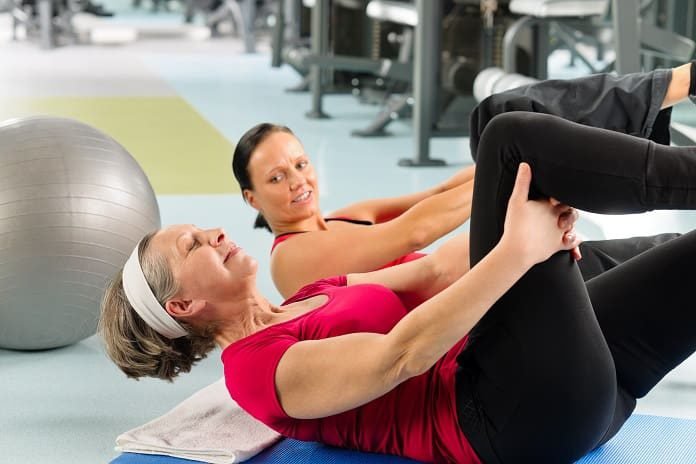Pain or physical inactivity increases the risk of a decline in cognitive function. This, in turn, can lead to dementias such as Alzheimer’s disease. A recent study investigated how levels of pain and physical activity relate to cognitive function.
Almost a quarter of Americans over the age of 85 suffer from dementias such as Alzheimer’s disease. These diseases greatly decrease an individual’s quality of life and can impose substantial burdens on families and caregivers. Understanding the lifestyle and health factors that lead to dementia can help researchers develop plans to slow the growth of these diseases.
Studies have found that pain or physical inactivity can lead to small decreases in cognitive function. This can lead to the development of dementias. Most studies have looked at pain and physical activity separately. For example, adults who keep active by regularly practicing martial arts seem to have better cognitive function than those who do not. A group of Italian researchers decided to look at both pain and physical activity in the same individuals, and see how these related to cognitive function. Their study was recently published in PLOS ONE.
American national health survey that measured cognitive function
The researchers used data from the National Health and Nutrition Examination Survey, which included thousands of older adults living in the USA. The participants were 72 years old on average and evenly split between male and female. The surveys, carried out between 1999 and 2002, tested cognitive function for almost 3,000 older adults.
For this test, participants were given a table with the numbers 1-9 each paired with a different abstract symbol (e.g., ┴ or Λ). They were then given a form with many numbers alone and asked to fill in the matching symbols as quickly as possible. The researchers compared the results of this test with the participant’s physical activity level and how much pain they experienced in their daily life.
Cognitive function in older adults was associated with socioeconomic status
To start, the researchers compared the study participants using cognitive function scores in the lower half to those who scored in the upper half. Women, younger people, married people and American citizens were all slightly more likely to be in the upper half of socioeconomic status. Study participants with higher household incomes were moderately more likely to be in the upper half. Participants with at least a high school education were much more likely to be in the upper half when compared to those who had not completed high school.
Most types of pain were not associated with cognitive function
The participants reported the types of pain that they suffered from, such as joint pain, back pain or neck pain. However, most of the pain sites were not associated with significant differences in cognitive function. The single exception was left shoulder pain. Participants with this type of pain had, on average, lower cognitive function scores.
More active adults had greater cognitive function, regardless of pain
Participants who reported expending a lot of energy on physical activities were somewhat more likely to have cognitive function scores in the upper half. Furthermore, just about every type of physical activity was associated with greater cognitive function. These activities included:
- Performing tasks around the home
- Vigorous activities
- Moderate activities
- Muscle strengthening exercises
In general, participants who were physically active tended to have higher cognitive function scores compared to those who were less active. The pain didn’t seem to affect this. In other words,
active participants with more pain did not have different cognitive scores than active participants with less pain. Likewise, study participants who were not active tended to have lower cognitive function scores, regardless of whether or not they suffered from pain.
Physical activity is a better predictor of cognitive function than pain
This study did have limitations. Most importantly, it was strictly observational. This means that it could not determine if physical activity or pain was directly changing cognitive function. For example, it is still possible that cognitive decline actually leads to decreased physical activity. The study also relied on a single test of cognitive function, and the original survey was conducted several years ago.
Despite these weaknesses, the study shows that physical activity was linked to cognitive function, at least in this population of American older adults. In contrast, the link between pain and cognitive function was much weaker, and whether or not someone was physically active seemed to overweigh whether or not they also suffered from pain.
These results certainly do not suggest that pain is not important. However, they do imply that future studies should focus on physical activity as a potential method of affecting age-related cognitive decline.
Written by Bryan Hughes, PhD
References:
(1) Maldonato, N. M., Sperandeo, R., Caiazzo, G., Cioffi, V., Cozzolino, P., De Santo, R. M., Fusco, M. L., Iorio, V. S., Gigante, E., Marone, P., Nascivera, N. & Scognamiglio, C. Keep moving without hurting: The interaction between physical activity and pain in determining cognitive function at the population level. PLOS ONE 13, e0197745 (2018). https://doi.org/10.1371/journal.pone.0197745
(2) Koller, D. & Bynum, J. P. W. Dementia in the USA: state variation in prevalence. Journal of Public Health 37, 597-604 (2015). https://doi.org/10.1093/pubmed/fdu080



